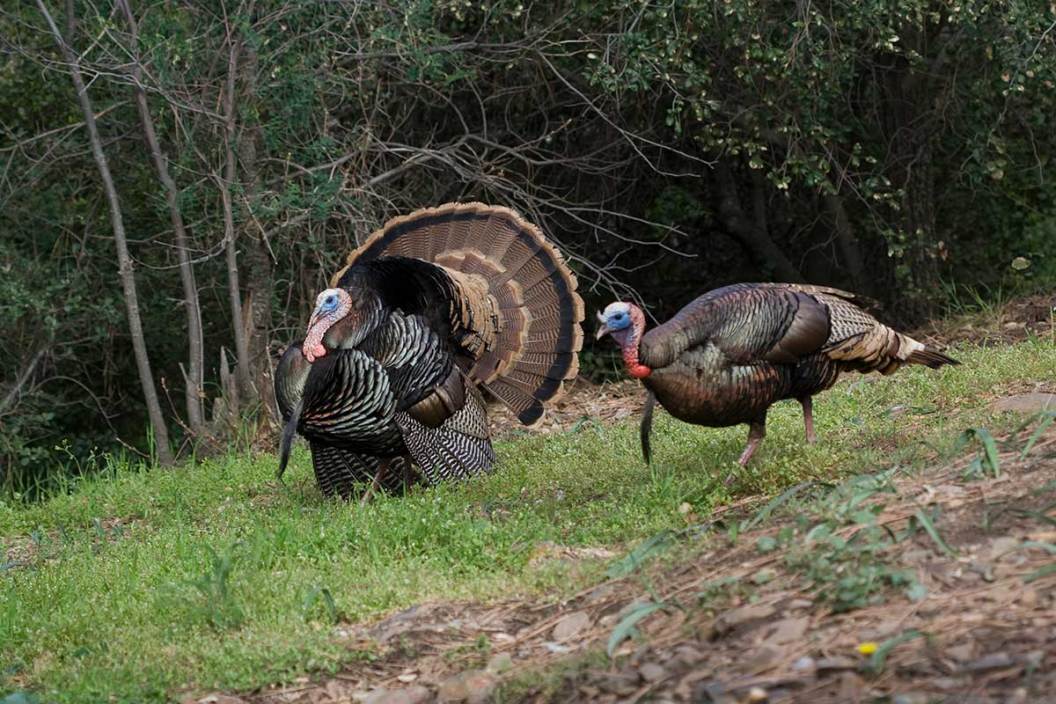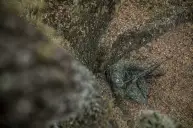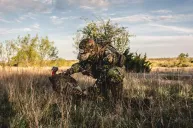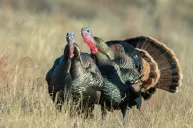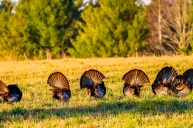There's something extra enjoyable about spring turkey season. We put a lot of effort into trying to read the woods and stack the odds in our favor, but it's often not solely up to us. A successful turkey season doesn't always depend on your hunting style or tactics. There are other factors, usually beyond our control, that weigh heavily.
You can have a stellar hunting area or pristine call selection, but sometimes it all goes out the window when it comes to chasing our favorite springtime quarry.
If you want to have a better idea of what to look for, we've listed a few indicators that can lead to great turkey hunting conditions. It's not an end-all, be-all list, but it helps guide hunters towards the notes to make as they prepare for their turkey adventures. Read on and learn a few of the things to keep an eye on, and you might just be able to count them as a benefit to your turkey hunting success.
1. Spring is On Time
Whether you hunt in the south where some seasons start as early as March, or you're in the northern tier of states where we must wait until the first of May, noting that the winter is over and the change of seasons has occurred sets things up nicely for turkey time.
Late snowfall and cold temps into April and May can toss a wrench in the gears. Bad thunderstorms and severe weather, more common in a lot of areas in the U.S. during the spring, can cause turkeys to minimize movement and refuse to respond to calls.
On the other hand, when temperatures warm at a normal pace, severe weather doesn't mess things up, and plant and bug life is given ample opportunity to recover after a dormant winter, you'll find that it's a signal that turkeys are on the right track, too. If things have warmed up nicely and stayed that way, you can count on your turkey season being a little more fruitful than otherwise.
2. Pre-Season Conditions Line Up
This may sound like the same thing as number one, but let's look at it from a different angle. If spring shows up on time, that's one thing, but when the warmer temperatures come too soon, breeding activity can often begin before the season even starts.
This can mean many hens are already bred and sitting on nests, with a lesser number that haven't been mated. This can increase some pressure on the Toms that got a late start, or at least bring the intensity of aggressive gobblers seeking mates closer to the beginning of your turkey hunting season.
In other words, do you have your game face on from the opening tip? If you pay attention to what turkeys are doing in the weeks building up to opening day and adjust accordingly, you've just aligned yourself with a better chance at bagging a bird.
Another factor is the amount of rain in your home area. Since wild turkeys are ground nesting birds, too much water can make for poor nesting conditions, meaning that normal populations may have to move into different areas with better brooding spots. A drier spring with normal temperatures gives everyone a chance to see more birds.
3. Younger Gobblers Are Abundant
High numbers of Jakes in your home woods is a good thing. They are the future of the flock, and though it may not immediately translate to more desirable (read: old) birds in the current season, it can still help tip the scales.
Jakes are the birds that make a boss Tom crazy. You can likely expect a lot of strutting, gobbling, and even some fights. If a group of Jakes shows interest in something, you can bet an older turkey will be on the case to show the youngsters who's boss. When the Jakes come running in to your calls and decoy, hold out and wait for the four- and five-year-old birds, because they'll almost certainly be shortly behind.
4. Bird Activity is Everywhere
Seeing lots of activity long before you head out to hunt is certainly better than the opposite. Seeing signs of birds dusting in the dirt or spotting a roosting area is a great precursor. Hearing vocalizations is a good indicator that the turkeys will be responsive to your pot calls and box calls. And seeing birds regularly, in the same places at roughly the same times, is as close to patterning these unpredictable birds as you can get. It's foolproof, right?
Well, not exactly. Occasionally you will hear tales of giant turkey flocks seen consistently, right up until opening day when they seem to just disappear. Hunters should understand that the birds are still there, and there's still reason to stay positive.
If birds didn't stick to the same activities, what would be their likely Plan B? What's Plan C and Plan D? Using your brain to think through, or at least eliminate, possible shifts in behavior can keep you on the right path towards a punched turkey tag.
5. The Deer Are Doing the Right Things
It isn't a big mystery that deer and turkeys are often seen in the same fields, feeding together side by side. In most of my years hunting turkeys, I've noticed deer seem to be in certain areas that provide food, bedding, and cover, and there are usually flocks of turkeys using the same lands.
If the deer activity has decreased, I've noticed that the turkeys follow suit, and sometimes don't come back for some time. Whitetail deer and wild turkeys in my area seem to feed off each other's psyche. That means if I see a lot of deer doing normal deer things, I can almost guarantee I'll see turkeys doing normal turkey things. If I see more deer intermingling with turkeys, I'm more confident than if I see one without the other.
It might not be true for everyone in every corner of the country, but for me, it works.
Just remember that there is no greater teacher than trial and error. Lord knows that the wild turkey has taught us many lessons, but we can teach ourselves some things, too.
Scouting, preparation, and calling techniques are only part of the equation when it comes to turkey hunting. Use what the conditions and environment are telling you, and maybe you'll see the kind of success you're looking for.
Please check out my book "The Hunter's Way" from HarperCollins. Be sure to follow my webpage, or on Facebook and YouTube.
